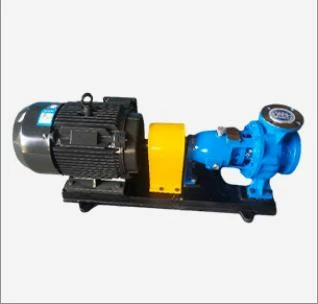Khmer
- Afrikaans
- Albanian
- Amharic
- Arabic
- Armenian
- Azerbaijani
- Basque
- Belarusian
- Bengali
- Bosnian
- Bulgarian
- Catalan
- Cebuano
- Corsican
- Croatian
- Czech
- Danish
- Dutch
- English
- Esperanto
- Estonian
- Finnish
- French
- Frisian
- Galician
- Georgian
- German
- Greek
- Gujarati
- Haitian Creole
- hausa
- hawaiian
- Hebrew
- Hindi
- Miao
- Hungarian
- Icelandic
- igbo
- Indonesian
- irish
- Italian
- Japanese
- Javanese
- Kannada
- kazakh
- Khmer
- Rwandese
- Korean
- Kurdish
- Kyrgyz
- Lao
- Latin
- Latvian
- Lithuanian
- Luxembourgish
- Macedonian
- Malgashi
- Malay
- Malayalam
- Maltese
- Maori
- Marathi
- Mongolian
- Myanmar
- Nepali
- Norwegian
- Norwegian
- Occitan
- Pashto
- Persian
- Polish
- Portuguese
- Punjabi
- Romanian
- Russian
- Samoan
- Scottish Gaelic
- Serbian
- Sesotho
- Shona
- Sindhi
- Sinhala
- Slovak
- Slovenian
- Somali
- Spanish
- Sundanese
- Swahili
- Swedish
- Tagalog
- Tajik
- Tamil
- Tatar
- Telugu
- Thai
- Turkish
- Turkmen
- Ukrainian
- Urdu
- Uighur
- Uzbek
- Vietnamese
- Welsh
- Bantu
- Yiddish
- Yoruba
- Zulu
Telephone: +86 13120555503
Email: frank@cypump.com
ធ្នូ . 31, 2024 06:48 Back to list
hydrated lime slurry pumping
Pumping Hydrated Lime Slurry An Essential Process in Various Industries
Hydrated lime, also known as calcium hydroxide (Ca(OH)₂), is a versatile chemical widely used in various industries such as construction, water treatment, and agriculture. When hydrated lime is mixed with water, it forms a slurry that can be efficiently pumped for numerous applications. This article delves into the intricacies of pumping hydrated lime slurry, exploring its importance, challenges, and best practices.
Importance of Hydrated Lime Slurry
Hydrated lime slurry plays a crucial role in a variety of industrial processes. In construction, it is often used for soil stabilization, enhancing the load-bearing capacity of the ground, and improving the efficiency of concrete mixtures. In water treatment, hydrated lime helps in raising the pH of acidic waters, facilitating the precipitation of heavy metals and other impurities. Furthermore, in the agricultural sector, it serves as a soil amendment, helping to improve the pH balance of acidic soils and promoting healthier crop growth.
Challenges in Pumping Hydrated Lime Slurry
Pumping hydrated lime slurry, while beneficial, presents several challenges that need to be addressed to ensure efficient operation. One of the primary difficulties is the slurry's high viscosity and density, which can lead to pump wear and tear over time. Additionally, the abrasive nature of lime particles can contribute to clogs and increased maintenance costs if not properly managed.
Another challenge is the potential for settling. If hydrated lime slurry is left stagnant for too long, the solid particles can settle at the bottom, forming a thick sludge that is difficult to pump. This settling can result in inconsistencies in slurry composition, affecting the overall quality and effectiveness of the material being used.
Temperature can also affect the pumping process. Hydrated lime slurry tends to perform better when kept at specific temperature ranges. If the slurry is too cold, it may thicken, while elevated temperatures can alter its chemical properties.
Best Practices for Pumping Hydrated Lime Slurry
hydrated lime slurry pumping

To overcome the challenges associated with pumping hydrated lime slurry, various best practices should be implemented
1. Choosing the Right Pump Selecting a pump designed specifically for slurry applications is vital. Positive displacement pumps, centrifugal pumps, and progressive cavity pumps are commonly employed for handling hydrated lime slurry. Each pump type has unique advantages, so it's essential to evaluate their capabilities against the specific slurry characteristics.
2. Maintaining Proper Slurry Consistency It’s crucial to ensure that the hydrated lime slurry maintains a consistent viscosity. This can be achieved through proper mixing and by monitoring the water-to-lime ratio. Frequent testing of the slurry helps maintain optimal performance.
3. Implementing Regular Maintenance Routine maintenance checks on pumping equipment can help identify potential issues before they escalate. Inspecting wear parts, such as seals and impellers, can prolong the life of the pump and reduce downtime.
4. Controlling Temperature Keeping the slurry within the recommended temperature range can prevent consistency issues. Insulation and heating elements can be beneficial in colder environments, while cooling measures may be necessary in hotter climates.
5. Utilizing Agitation Systems Incorporating agitation systems can help keep the hydrated lime slurry in motion, reducing the risk of settling. These systems ensure that the lime particles remain suspended, resulting in a uniform mixture that is easier to pump.
Conclusion
Pumping hydrated lime slurry is a critical process in various industries, offering numerous benefits while presenting specific challenges. By understanding these challenges and implementing best practices, industries can ensure efficient and effective slurry management. Ultimately, the successful pumping of hydrated lime slurry contributes to improved operational efficiency, enhanced product quality, and a better overall outcome in applications ranging from construction to environmental management. As technologies advance, ongoing developments in pumping systems and methodologies will ensure that this essential process remains efficient and reliable in meeting industrial demands.
-
Custom Drilling Mud and Slurry Pump Supplier - High Efficiency, Tailored Solutions
NewsJun.10,2025
-
Supply Vertical Submersible Sewage Pump High-Efficiency WQ/QW Pumps Supplier
NewsJun.10,2025
-
Premium Sewage Ejection System & Pumps Efficient Waste Removal
NewsJun.09,2025
-
Premium Wholesale Slurry Pump Impellers Durable & Efficient Slurry Handling
NewsJun.09,2025
-
Top Sewage Pump Companies Durable Industrial Solutions for Efficiency
NewsJun.09,2025
-
Heavy Duty Slurry Pumps - OEM High Performance & Bulk Wholesale
NewsJun.09,2025










